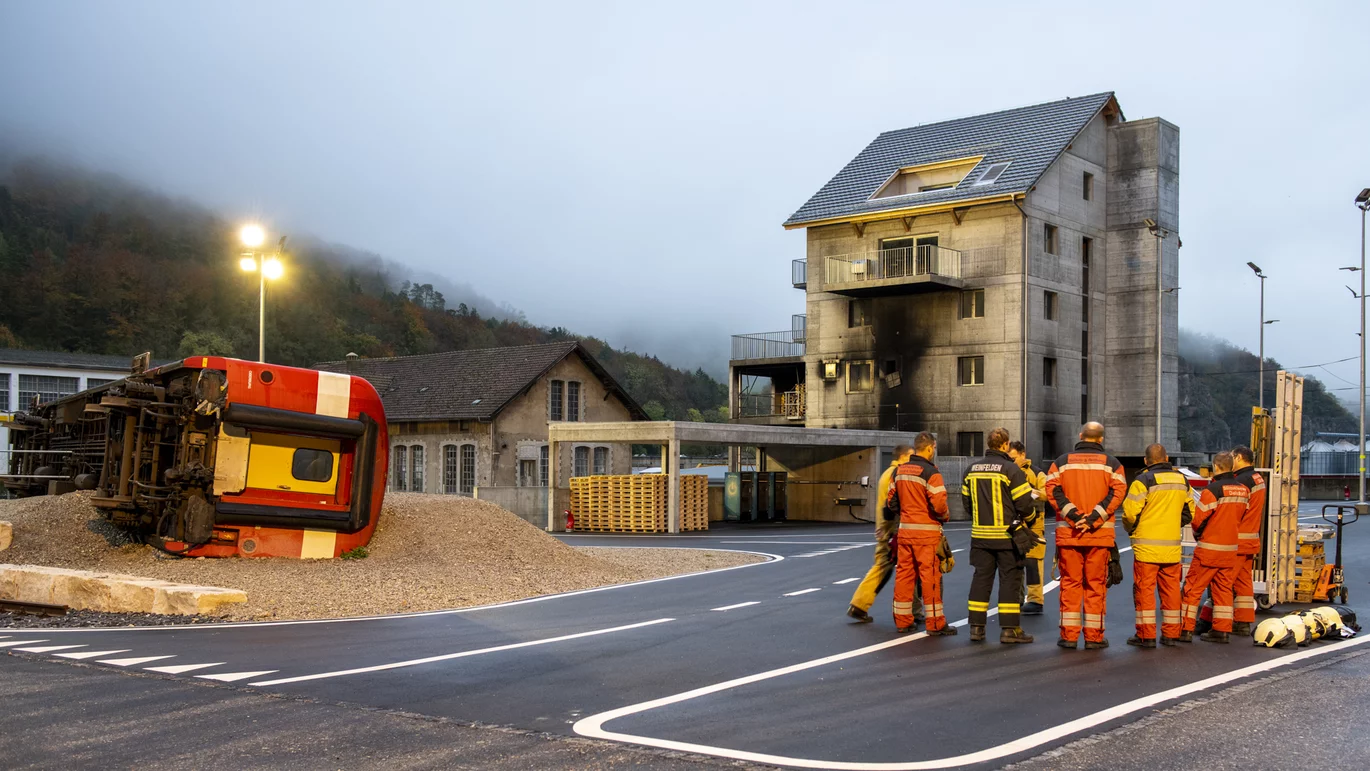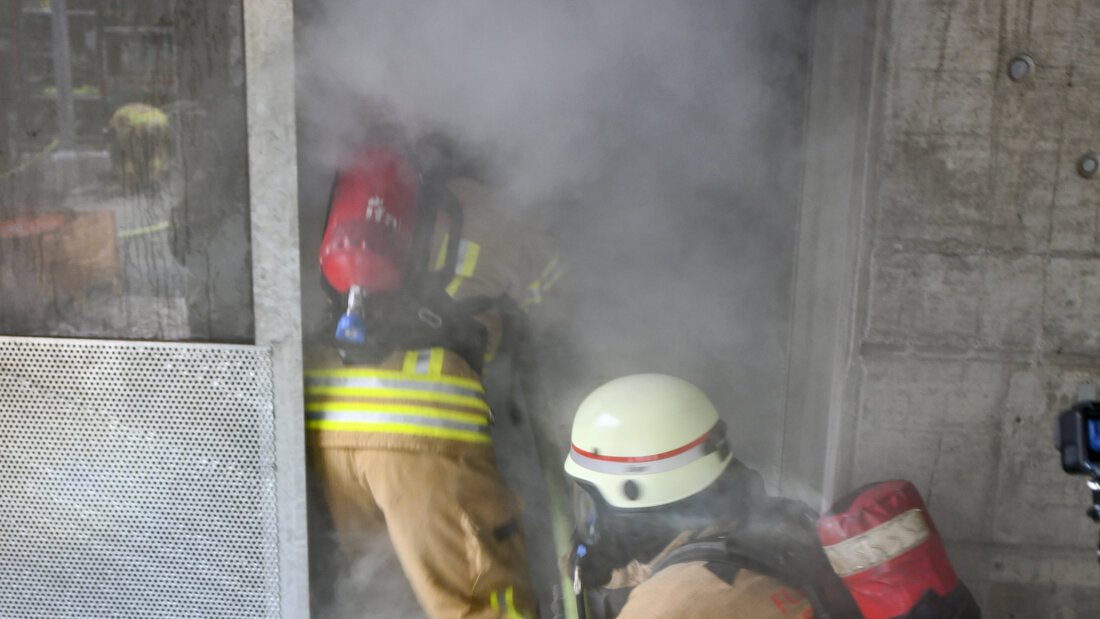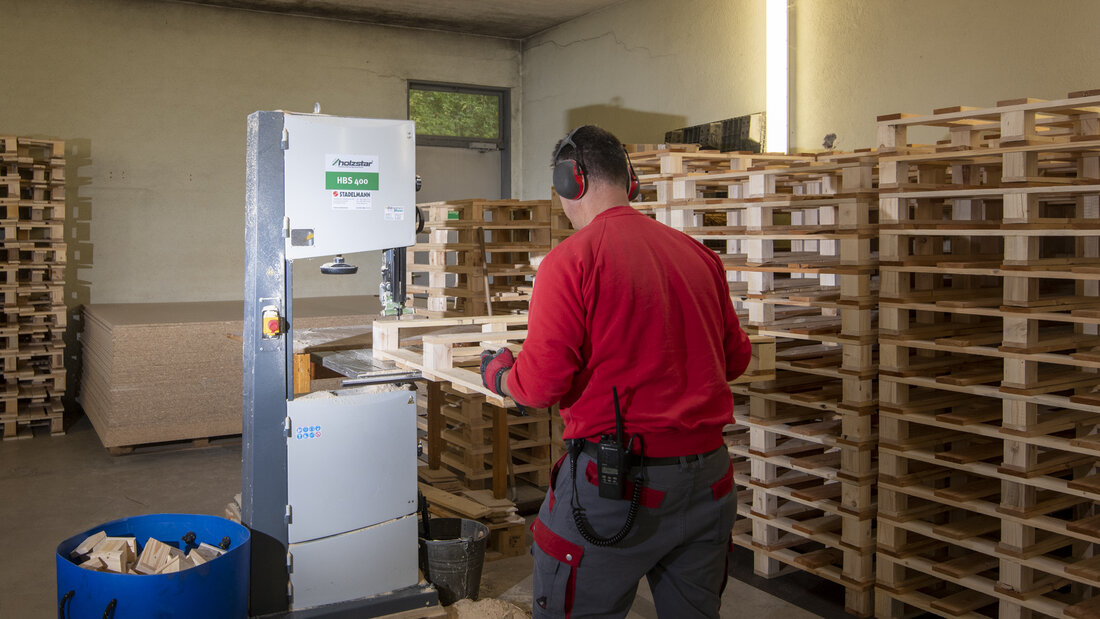During the training, the «images» from the basic training must be combined into a «show» so that the firefighters leave the course with as realistic of an impression as possible and implement the findings in their deployments. It is from this idea that the Firehouse Q was created – a variable stage for small and large scenarios from a possible operation.
The surprise is part of the concept
Even on the approach to the scene, not everything goes smoothly. With the parked cars it would be tight enough for the aerial ladders already, but then there is still one wildly parked in front and blocking the passage. The pulse rises before the actual operation begins.
The Firehouse Q has many surprises for the practising fire services. Instead of the smooth tarred surface, there are lawn lattice stones or gravel where the ladder should be put up. And the team in the interior attack is facing a locked door, which has to be pried open first. It is such small details that interrupt routines in a drill and challenge the practitioners – as in the real deployment.
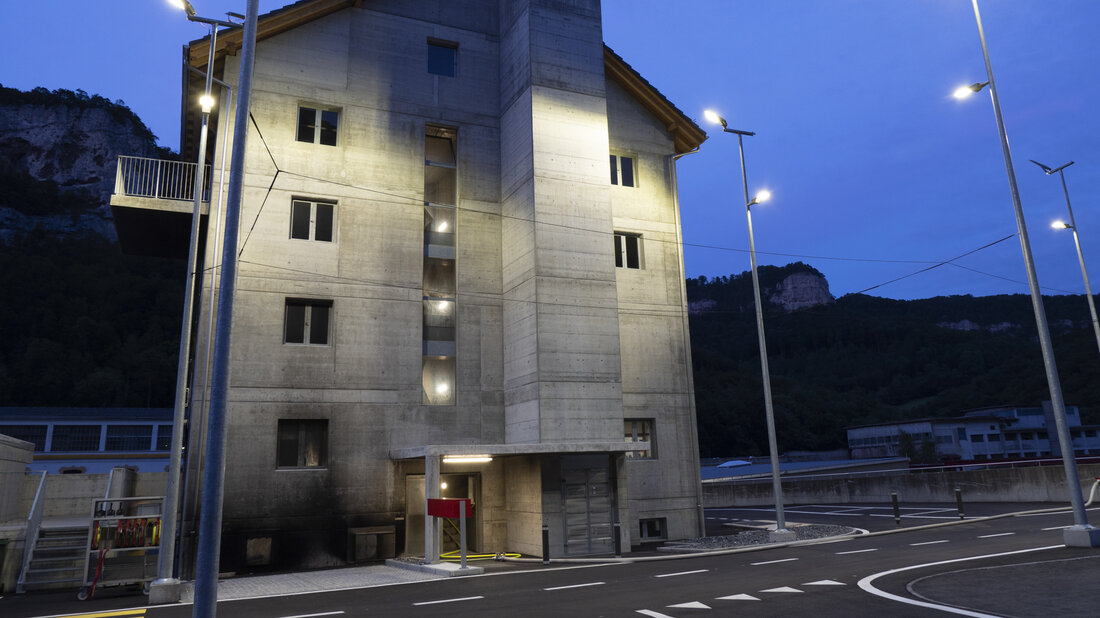
At least two ways to attack in all scenarios
Detailed lessons are also being brought together in the Pyrodrome. “But by now the participants know the rooms and the processes are largely the same," explains Urs Kummer. It is different in the Firehouse Q. If you want to extinguish a solid fire in the basement, you do not know beforehand whether the fire is on the right or left of the room and whether there is an obstruction in the way that was not there in the drill before.
Each room can be accessed by at least two attack paths. In addition to the interior staircase, there are attack paths via, for example, a delivery ramp, an outside escape staircase, as installed at many hotels, or access options via balconies and through the roof, which first has to be sawn open. Thereby the Firehouse Q shows itself again and again with a different face: as an apartment building, commercial building with carpenter's workshop or an office complex with break rooms.
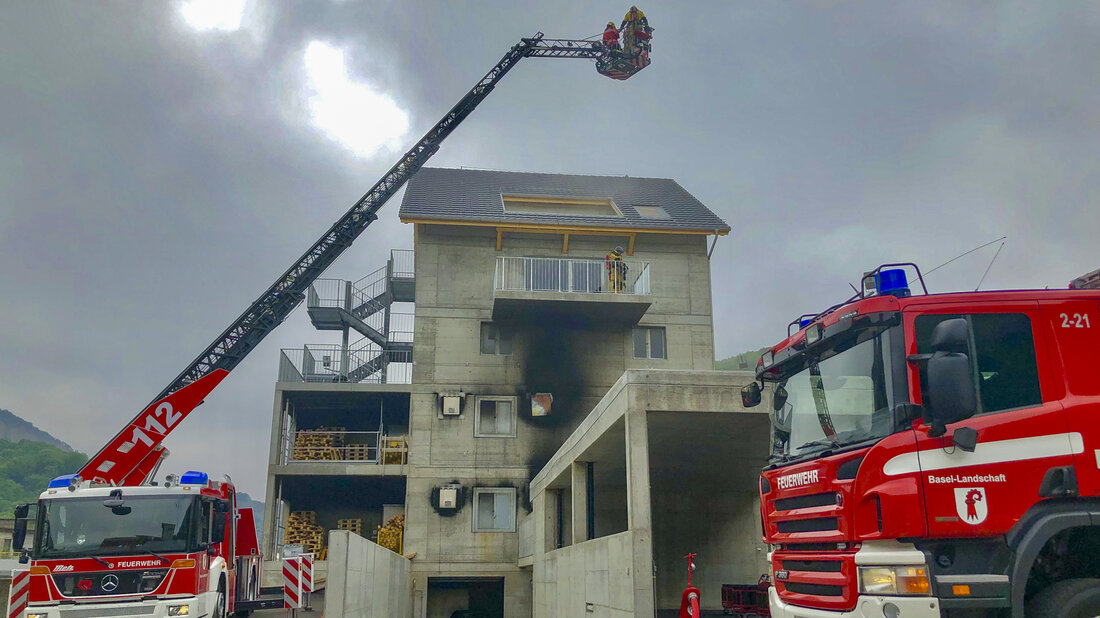
Mess is a real challenge
The fire rooms up to the first floor are lined with firebrick to be able to burn down wooden pallets. The furniture is correspondingly sparse, and everything looks quite tidy. On the upper floors, where mobile gas fires are used variably, the rooms are lavishly equipped and thus reproduce living and working places that are even more realistic. The current challenge at the Intercantonal Fire Service Training Center is the conception of a Messi room – orderly disorder for controllable practice situations in chaos.


